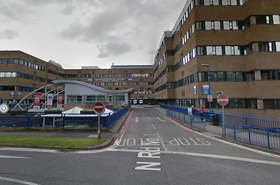Forced downtime is a common and often expensive threat to businesses, whether an organization is the victim of a cyberattack, a natural disaster, or even just human error. Advanced planning and spending upfront in order to mitigate potential disasters will save your company in the long run. Investing in disaster recovery (DR) solutions early will enable business continuity, avoid a lot of unnecessary stress, and save any organization from potentially devastating recovery costs.
What is disaster recovery?
One definition is that disaster recovery is an area of security planning that will protect an organization from the effects of significant negative events. DR allows an organization to maintain or quickly resume mission-critical functions following any type of disaster.
This means that implementing DR requires a different approach for every organization, as each has its own mission-critical functions. Typically, some mission-critical functions run on or rely on IT infrastructure. Therefore, it is good to look at DR within the context of this infrastructure; however, it should be part of business continuity planning as a whole.
Important questions to ask when planning and designing a mission-critical hosting infrastructure:
- How much time can any mission-critical functions be unavailable (RTO)?
- How much data can be lost? This means the time duration for which data is not recoverable (RPO). For example, if data is safely backed up daily, then a disaster can only cause one day of data loss.
- How much money will it cost the organization (per hour) when the mission-critical services are not available?
DR measures include prevention, detection, and correction.
Disaster recovery for common failures
Most hosting services include disaster recovery for most common failures such as failure of a physical disk, server, network switch, network uplink connection, or power feed. This is referred to as high availability (HA).
A redundant setup solves failures such that, if an element fails, another infrastructure piece takes over. Redundant networking devices and cabling, multiple power feeds, seamless failover to battery power, and separate power generators that can run forever play an important role in keeping IT infrastructure and thus your software services up and running. In case of a fire in a data center, the fire is typically detected early and extinguished through gas, by reducing oxygen, without even affecting most equipment in the same data center hall. This means that most ‘disasters’ are being recovered without impacting the availability of infrastructure services.
One of the most commonly used tactics in DR is creating a frequent backup of your data. These ensure that, if a disaster occurs, you can then restore your backup and relaunch your mission-critical functions and other services.
For a faster relaunch of your services after a disaster, replication of your application servers and data can come in handy. It is readily available to relaunch, compared to backups that would first need to be restored, which takes more time.
Preparing for critical disasters
Although much less likely to happen, no disaster recovery strategy is complete if it doesn’t take larger disasters into consideration. To mitigate these risks and enable business continuity, consider and alternative IT infrastructure environment. Many organizations are looking to the cloud for these solutions.
Some choose to backup critical data to another location or to the cloud. Others replicate application servers and data to another location, with available hosting infrastructure, to be able to relaunch application services quickly or have a seamless failover without service interruption. The cloud services option is often budget-friendly, rather than spending on infrastructure.
In case you need to mitigate the risk of failure of the entire environment, the common solution is to include a failover data center site in the IT infrastructure setup plan. Disaster recovery by means of adding an alternative data center (also called Twin DC setup) also requires a tailored approach to identify the right setup for your applications and mission-critical functions. This option also includes the need for an increased budget.
This means finding a balance between investing in more reliable hosting infrastructure, applications that deal with failures in the underlying infrastructure, and planning and preparing failover to an alternative infrastructure environment.
The main takeaways
As every business is different, each should have its own approach to disaster recovery and business continuity planning. The challenge for any organization is to balance the tools and methods that are available. The goal, however, should be very clear for everyone: invest upfront to prevent higher recovery costs in case of a disaster.





